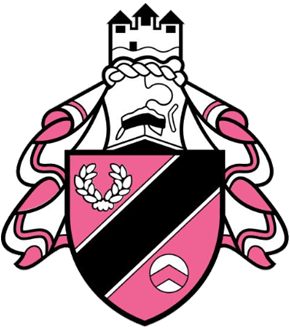Border Reivers, originally known as "Scottish Borders Rugby", and also known as The Borders, were one of four professional rugby union teams in Scotland, alongside Edinburgh, Caledonia Reds and Glasgow Warriors.

Edinburgh Rugby is one of the two professional rugby union teams from Scotland. The club competes in the United Rugby Championship, along with the Glasgow Warriors, its oldest rival. Edinburgh plays the majority of its home games at Edinburgh Rugby Stadium.

Glasgow Warriors are a professional rugby union side from Scotland. The team plays in the United Rugby Championship league and in the European Professional Club Rugby tournaments. In the 2014–15 season they won the Pro12 title and became the first Scottish team to win a major trophy in rugby union's professional era. The side is known for its fast, dynamic and attacking style of play, using offloads and quick rucks. Defensively the club prides itself on its 'Fortress Scotstoun' where the club play at home.

Murrayfield Stadium is a rugby union stadium located in the Murrayfield area of Edinburgh, Scotland. The stadium is owned by the Scottish Rugby Union (SRU) who has its headquarters based at the stadium, and is the national stadium of the Scotland national rugby union team. With a seating capacity of 67,144, it is the largest stadium in Scotland, the fifth largest in the United Kingdom, and the twenty–second largest in Europe.
Peter Wright is a former rugby union player and now coach.

Ayr Rugby Football Club is a rugby union club. Its professional men's side currently plays as Ayrshire Bulls in the Super 6 competition; and its women's side play in the Scottish Womens National One. The club also runs a "Club XV" which competes in the Tennent's National League 1, a 2nd XV "Ayr-Millbrae", which plays in the SRU West Reserve League Division 1, and various age group teams, from age 4, up to age 18.
The South of Scotland District is a Scottish amateur rugby union team which plays in the amateur Scottish Inter-District Championship. It draws its players from the South of Scotland, mainly the Scottish Borders where there has always been a proud tradition of rugby union. Historically the South team played matches against touring teams visiting Scotland from abroad, and also competed in the Scottish Inter-District Championship. After rugby union became a professional sport in 1995, the team was replaced in 1996 by the new Border Reivers team based in the same geographical area as the South and who wore the same colours as the old team.

Rugby union in Scotland is a popular team sport. Scotland's national side today competes in the annual Six Nations Championship and the Rugby World Cup. The first ever international rugby match was played on 27 March 1871, at Raeburn Place in Edinburgh, when Scotland defeated England in front of 4,000 people. Professional clubs compete in the United Rugby Championship, European Rugby Champions Cup and European Rugby Challenge Cup, while the Scottish League Championship exists for over 200 amateur and semi-professional clubs, as does a knock-out competition, the Scottish Cup. The governing body, the Scottish Rugby Union (SRU), is one of the ten first-tier member nations of World Rugby.
The Scottish Women's Rugby Union (SWRU) was the national governing body for women's rugby union in Scotland. It was responsible for the governance of women's rugby union within Scotland. Its role was all encompassing. It went from youth recruitment, through administrating all senior based competition, through to the performance and management of the Scotland women's national rugby union team.
Edinburgh Wanderers is a former rugby union club, founded in 1868. It was latterly a tenant of the Scottish Rugby Union, playing home fixtures at Murrayfield Stadium for nearly 75 years. In 1997 it merged with Murrayfield RFC to form Murrayfield Wanderers.

Caledonia Reds were a Scottish rugby union team. They participated in two seasons of the Heineken Cup. They evolved from one of the traditional four amateur districts of Scotland, North and Midlands, in 1996.

Rugby union in Scotland in its modern form has existed since the mid-19th century. Scotland has one of the oldest rugby union traditions and has introduced various innovations including rugby sevens.
Rugby union in the Scottish Borders has a long, and significant history.
Richie Dixon is a former rugby union footballer, the former head coach of the Scotland national team, the Georgia national team and Glasgow Caledonians. He was head of Physical Education at Currie High School in Edinburgh from 1972 until 1980.
The 1872 Cup – also known as the 1872 Challenge Cup – is a men's rugby union tournament contested every year between the two Scottish professional clubs, Glasgow Warriors and Edinburgh Rugby.
The Scottish Inter-District Championship is a rugby union competition between regional sides in Scotland. Established in 1953, the tournament went through several formats.
The 1998–99 season is the third in the history of the Glasgow Warriors as a professional side. During this season the young professional side competed as Glasgow Caledonians.
The Women's domestic rugby union leagues in Scotland are organised in a similar vein to the men's domestic leagues: on a national basis for the top leagues and regional leagues below feeding into those leagues.
The Welsh–Scottish League was a rugby union league in Scotland and Wales jointly implemented by the Scottish Rugby Union and the Welsh Rugby Union from the 1999–2000 season onwards. It was a precursor to the Celtic League and lasted three seasons, being disbanded after the Celtic League was set up.
Scotland's District rugby union sides are provincial representative teams, that in the amateur era capped the best amateur players from their area's club sides to play inter-district matches and matches against touring sides. These districts still survive at amateur level playing in an amateur Inter-District Championship and age-grade. The professional teams Glasgow Warriors and Edinburgh Rugby remain provincial sides based on the traditional districts.







